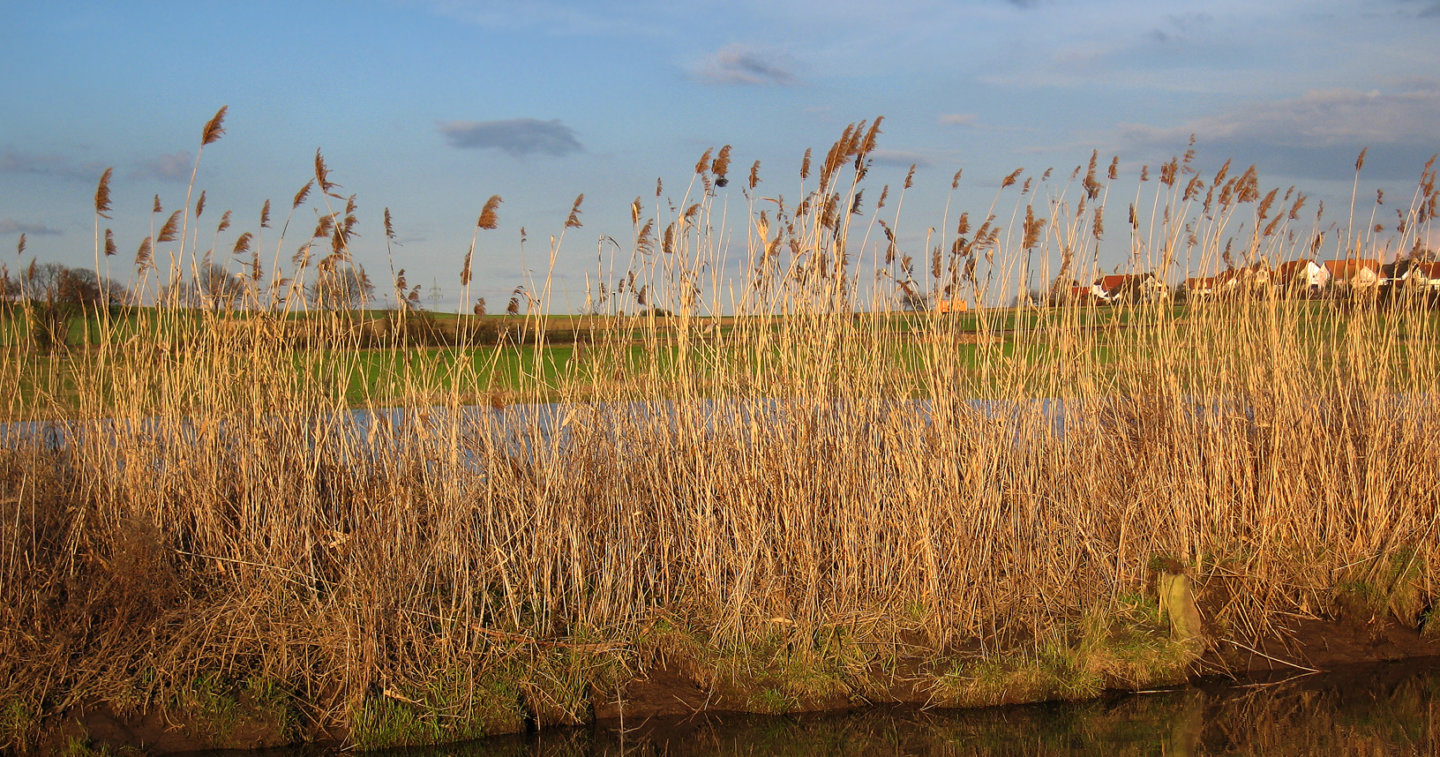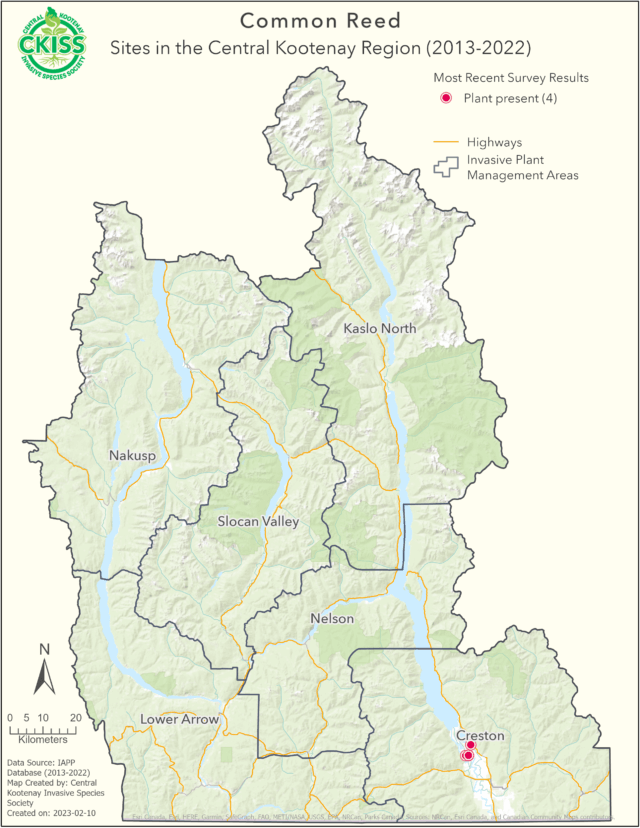Phragmites australis
Description
- Tall perennial grass with stiff stems up to 16 feet tall
- Forms dense stands with about 19 steams per square foot both dead and alive.
- Horizontal stems (Rhizomes), which annually send out stiff vertical shoots that are stiff and have sheath like leaves. The shoots and leaves are stiff and sharp due to high amounts of cellulose and silica.
- The flower stem is about one foot long with many feathery branches. Each individual flower is about 1/2 an inch in length.
- Flowers are ½ in. long, stalks hairy.
- Feathery, plume-like flower head is 13-40cm long and composed of many long branches that point upwards. Narrow clusters of flowers are arranged densely along the branches.
- The flowers are surrounded by silky white hairs that are purplish at first, becoming tawny to dark brown at maturity.
- Seeds are brown, thin and delicate. A long, narrow bristle is attached to each seed. The seed and bristle together measure approximately 8 mm long.
- Tends to prefer sunny wetlands and is also found in areas of moist soil in fresh or brackish water marshes. It can be found along riverbanks and lake shores. It grows in areas of disturbed soil, ditches, roadsides, and other areas of degradation. The only thing limiting its growth is high salinity.
- A prolific seed spreader and soil movement easily deposits its rhizomes, by soil moving equipment, animals, water, or happenstance. Common reed can sprout from rhizomes or seeds and some colonies can be hundreds of acres in size.
- Leaf blades alternate along top half of stem, flat, strap-like, smooth, tapering to long tip, to 2 ft. long, to more than 1 in. wide.
- Sheaths are smooth
- Ligule evident
- Inflorescence conspicuous, large, silvery tan, plume-like, 1 to 2 ½ ft. long, silky, on stem tip, often draping to one side, many ascending branches, ring of hairs at base.
Consequences of invasion
- Contributes to the reduction of biodiversity in wetlands is the primary threat.
- Invasive stands of Phragmites can quickly replace other native species such as short grasses, cattails and other native plants.
- Affects marsh habitat of birds and fish.
- Is a fire hazard when there is a large amount of dead biomass.
Status in the CKISS region
- European common reed is currently classified as Eradicate on the CKISS Annual Priority List.
- It has only been found in the Creston Invasive Plant Management Area, where eradication is the goal.
- This species is also classified as Provincial EDRR by the provincial government, and is managed by the Province.
- Please report any sightings immediately to the Province.
- To learn more about how CKISS classifies and manages invasive species, see our Invasive Species Priority Lists page.
Integrated pest management options
- The easiest way to control a portion of the Phragmites problem is to eliminate restrictive flows in salt marshes, increased salinity from this method kills Phragmites.
- Cutting, mowing or disking can help the problem. If mowing is done too late or early it can actually stimulate growth and make denser stands. This method does contribute to a reduction in fire hazards. Disking is costly but, can work on a small-scale basis.
- Herbicides, while they do work, pose another type of environmental problem killing other grass species and it is also expensive.
- Burning can only work if it is a root burn, and burning can actually stimulate growth.
- Covering with plastic after mowing can have good results after a few days because of higher temperatures generated under the plastic. This method is labor intensive.
- A combination of all these methods along with aggressive replanting of other native species is the most effective way to inhibit encroachment by Phragmites.


